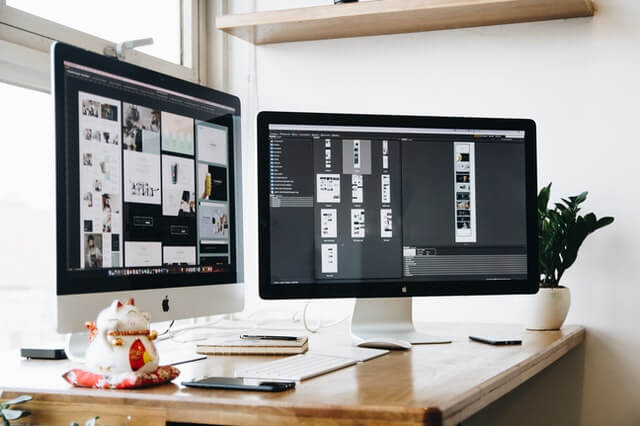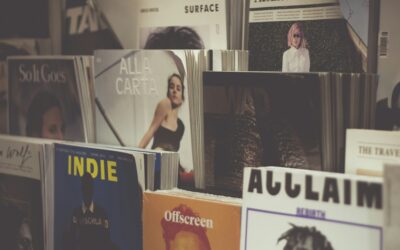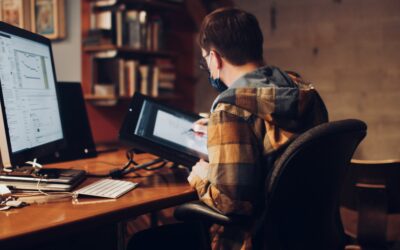Collaborative Design is a form of design that combines feedback from a range of sources, as the name indicates. Graphic designers, researchers, developers, and others collaborate to create designs that are more than simply visually appealing. When a group of individuals engages in the whole process of generating an asset, from brainstorming to allocating tasks to assigning team members, it is known as collaborative design. It’s a multi-step process that involves planning and strategy, all of which is centered on feedback and delivered collaboratively. Consider collaborative design like any other planning strategy: it has a beginning, a middle, and an end. Using this strategy, however, each level requires real-time asset review and approval.
Teams work to build the intended output after completing an abstract idea, with each step varying from one team to the next and from one product to the next. Design collaboration may be thought of as a multi-step process for conceptualizing a design.
In and of itself, every design process is multifaceted and complex. The marketing department creates a brief that includes project parameters like design dimensions, deadlines, and important references, which the creative design team then examines and accepts.
9 Ways to Make Collaboration Design Easier:

- Conducting design research
The first stage in every creative design project should be to establish a goal, such as what the Graphic Designer wants to accomplish, client needs, how you’ll communicate it throughout the process, and what you want the finished product to look like. It’s much easier to build a strategy around a well defined design aim. After that, before establishing a plan, you must examine all of your available resources, including how many people are available to work on the creative design project, how much time you have, and how much money it will cost. After then, your team should start participating in the process as soon as possible, because it’s vital to get everyone on the same page as soon as feasible.
- Communication
Spend time at the start of a project clearly outlining your communication requirements. and make sure that each member of your creative design agency receives a copy.
These principles can assist you guarantee that everyone is contributing to the dialogue when there are so many different personalities working in a single creative design company.
- Analyze Your Data
Gather all of the information you gathered in step one and study it completely. Look for patterns and decide what thoughts and designs an asset requires to achieve your goal and suit the expectations of the client. It’s vital to collect early feedback and input from all of the people who will be working on the project.
This will not only start a conversation and get the creative juices flowing, but it will also begin to establish a feeling of ownership in your team for the project.
- Use Right Kind of Tools
When you’re trying to work with a large group, a low-quality tool might be exceedingly inconvenient. You should use the appropriate design collaboration tools to harmonize the working relationship between your team members. If you use the right tool, you’ll be able to raise your productivity and improve the quality of your designs.
- Encourage Frequent Updates
Collaboration Design projects are notoriously tough due to their numerous dependencies. Because there are so many linkages, it’s vital that your team members meet often and exchange information. Daily stand-up meetings are a fantastic alternative if you’re short on time since they allow everyone to speak their daily priorities and coordinate work.
- Maintain Consistent Version Control
During your collaborative design project, your creative designers will create a big number of files, and you can’t afford to lose track of them. The most recent version of your work must be available to everyone. Spend some time with your team talking about version control concepts and making sure they’re being followed. The location of files, when final versions are released, and which file naming standards will be followed should all be specified in your rules.
7. Accept reviews and feedback
The key to effective collaborative design is to provide regular evaluations and feedback sessions. You must strike the right balance between letting your team members do their jobs and assessing their work on a regular basis. You should establish your review and feedback strategy from the start of your project. You should define when and where they’ll happen, as well as the technology you’ll use to speed things up. You will be less bewildered and frustrated as a result of this.
8. Collaborate
Humans are friendly and cooperative animals by nature. It’s one of the key reasons why collaborating with people and creating something beautiful over millions of years feels so great. You should try to keep that vibe throughout the design collaborative process. It could keep your team members happy and motivated, giving them the energy they need to do their best work.
- Conduct internal design evaluations
The process of designing is never-ending. Your team’s creative designers should not attempt to move an asset from the design to the development stage without gaining input. Instead, do internal assessments as the design progresses to determine what is working and what is not, if the design is acceptable for your aims and the goals of your clients, and whether there are any design flaws.
Internal design assessments require a big number of people to participate. While one designer may believe the item is great after a week of effort, a fresh pair of eyes can see pixel or colour palette flaws right away. It’s also a good idea to listen to any negative feedback and rectify any faults before returning a design to a customer for approval. If your team addresses problems before a client sees a design, not only will the design have a better chance of fulfilling their vision, but it will also speed up the approval process.
Conclusion
By allowing your team to work together and speeding up the feedback and testing process, collaborative design boosts efficiency. The early phases of the process ensure that everyone is on the same page, while the latter stages allow each person working on a design to offer feedback before the final product is handed to your client.
On the other side, a collaborative design method instills something deeper in a team. It enables everyone to take part and have a sense of ownership over the goods they work on. That’s important not just for the quality of your job, but also for the overall cohesiveness of your team.
Some other Posts you might be interested in.
How a Leading Motorcycle Manufacturer Used QuickReviewer to Meet Service Documentation Goals
A global motorcycle brand brings R&D, service, and quality teams together on QuickReviewer to provide accurate, launch-ready manuals in time—ultimately leading to improved service quality and customer satisfaction.
How a Mid-Sized Insurance Company Centralized Documentation and Achieved BFSI Compliance with QuickReviewer
A mid-sized insurance firm achieved full BFSI compliance and centralized its fragmented documentation using QuickReviewer. With version control, text comparison, and collaborative review, the company eliminated delays, reduced losses, and improved customer satisfaction by delivering faster claims—all while ensuring long-term risk reduction and stability.
Empowering a Mid-Sized Travel Agency With Quality Travel Collateral Using QuickReviewer
A mid-sized travel agency operating globally transformed its content review process using QuickReviewer, enabling faster approvals of seasonal itineraries and offers. Learn how version control, real-time collaboration, and centralized feedback empowered teams to launch campaigns with consistency, speed, and confidence.
Reducing Rider Gear and Accessory Design Time for Mid-Size Adventure Motorcycles with QuickReviewer
See how QuickReviewer revolutionized the design and development process for riding gear and motorcycle accessories, enabling rapid 3D reviews, targeted feedback, and faster launches.
How a Popular Automotive Magazine Used QuickReviewer to Publish a Special Issue in Just One Week
How QuickReviewer Helped a Leading Magazine Publish an Automotive Special in 7 Days
How an Engineering Firm Updated Legacy Technical Documentation with QuickReviewer
How an Engineering Firm Easily Updated and Transformed Legacy Technical Documentation with QuickReviewer, Boosting Compliance and Customer Satisfaction







